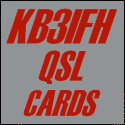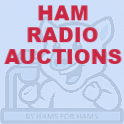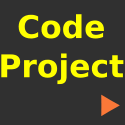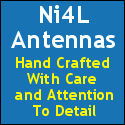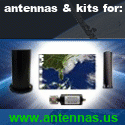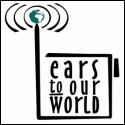Archive for the ‘Technology’ Category
 24 December to 31 December: 1st Ever Winter Olivia Digital Mode QSO Party
24 December to 31 December: 1st Ever Winter Olivia Digital Mode QSO Party
Special Event Week: Dec 24-Dec 31, 2023
The 1st annual Olivia Digital Mode on HF Winter QSO Party, celebrating 20 years of Olivia.
The Olivia Digital DXers Club (we’re on ClubLog!) is holding the first annual Winter Olivia Digital Mode on HF QSO Party, starting at 00:00 UTC, 24 December 2023, and ending at 23:59 UTC, 31 December, 2023.
Minimum logging requirements: Callsign worked, Band (or Frequency), Mode (I.e., Olivia 8/250, or other variations), Time QSO Started. You can log more than that, but for the sake of the certificate, please send at least the minimum information per QSO, to NW7US (email is on QRZ profile). Logs can be any common method, from an .ADI file, to a screen shot.
Full details are on our website:
https://OliviaDigitalMode.org
Olivia, a Multi-Frequency Shift Keying (MFSK) radioteletype digital mode, is an amateur radioteletype protocol designed to work in difficult (low signal-to-noise ratio plus multipath) propagation conditions on shortwave radio (i.e., high-frequency, or HF) bands. The typical Olivia signal is decoded when the amplitude of the noise is over ten times that of the digital signal!
Here is an introduction to the Olivia digital mode:
73 de NW7US
 Better Than FT8? Olivia Digital Chat Mode – Raleigh Amateur Radio Society Video
Better Than FT8? Olivia Digital Chat Mode – Raleigh Amateur Radio Society Video
Olivia is the digital communications mode on shortwave (high frequency sub band, or, HF) for amateur radio operators who want more than the “Check Propagation” FT8 mode. This video is an introduction that was presented to the Raleigh Amateur Radio Society ( https://www.rars.org/ ) on December 12, 2023, presented by Tomas Hood, NW7US
Olivia information can be found, here:
https://OliviaDigitalMode.org
Olivia, a Multi-Frequency Shift Keying (MFSK) radioteletype digital mode, is an amateur radioteletype protocol designed to work in difficult (low signal-to-noise ratio plus multipath) propagation conditions on shortwave radio (i.e., high-frequency, or HF) bands. The typical Olivia signal is decoded when the amplitude of the noise is over ten times that of the digital signal! It is commonly used by amateur radio operators to reliably transmit ASCII characters over noisy channels (slices of high-frequency spectrum — i.e., frequencies from 3 MHz to 30 MHz; HF) exhibiting significant fading and propagation phasing.
The Olivia digital modes are commonly referred to by the number of tones and the bandwidth used (in Hz). Therefore, it is common to express the Olivia digital mode as Olivia X/Y (or, alternatively, Olivia Y/X ), where X refers to the number of different audio tones transmitted, and Y refers to the bandwidth in Hertz over which these signals are spread. Examples of common Olivia modes are, 8/250 (meaning, 8 tones/250-Hertz bandwidth), 16/500, and, 32/1000.
The protocol was developed at the end of 2003 by Pawel Jalocha. The first on-the-air tests were performed by two radio amateurs, Fred OH/DK4ZC and Les VK2DSG, on the Europe-Australia propagation path in the 20-meter shortwave radio amateur band. The tests proved that the Olivia protocol (or, digital mode) works well and can allow regular intercontinental radio contacts with as little as one-watt RF power (when propagation is highly-favorable). Since 2005, Olivia has become a standard for digital data transfer under white noise, fading and multipath, flutter (polar path) and auroral conditions.
Olivia can perform nearly as good as the very popular WSJT mode, FT8, and better than FT4.
See you on the waterfall!
73 de NW7US
 International Morse Code Day (April 27)
International Morse Code Day (April 27)
Morse Code Day on April 27 (every year) honors one of the inventers of the Morse code, Samuel Morse, who was born on this day in 1791.
Samuel Finley Breese Morse (April 27, 1791 – April 2, 1872) was an American inventor and painter. After having established his reputation as a portrait painter, in his middle age Morse contributed to the invention of a single-wire telegraph system based on European telegraphs. He was a co-developer of Morse code and helped to develop the commercial use of telegraphy.
Alfred Vail developed the dot-dash structure, and Leonard Gale along with Vail was instrumental in developing the mechanical receiving apparatus for code.
Samuel Morse gets most of the credit because of his work in promoting this code as a viable means of communication. Morse code is still used now. Amateur radio is one of the communities in which Morse code is popular and in daily use.
73 de NW7US dit dit
https://NW7US.us
..
 What Headphones Do You Use, And Why?
What Headphones Do You Use, And Why?
What headphones do you use for your radio operation, and WHY do you use that particular make and model?
I use Audio-Technica ATH M30x professional monitor headphones (cans).
https://www.audio-technica.com/en-gb/ath-m30x
I use my rig’s filters to shape the audio.
1. I’ve replaced the over-the-ear pads with Gel pads. Wearing these cans is comfortable enough to use for extended periods of time (such as contests).
2. The mid-range with these cans is superior to other cans I’ve had.
3. They are rugged, so taking them out to the field isn’t a problem.
73 de NW7US dit dit
..
 Part 2 of 2: Life-changing Moment and Solar Cycle 25
Part 2 of 2: Life-changing Moment and Solar Cycle 25
From the RAIN HamCast episode #57, 2021-XII-25 (used with permission):
RAIN’s Hap Holly/KC9RP spoke with Tomas recently about Solar Cycle 25. This is the second and final excerpt from their discussion.
From the introduction to The RAIN HamCast, Episode #57:
In this episode, we continue our discussion with Tomas Hood/NW7US, the author of many writings about space weather and effects of solar activity the past 20-plus years.
(Part 1 of 2 can be found here: Episode #56, https://www.youtube.com/watch?v=HnuSOXhFELQ)
Tomas has been a short wave enthusiast since 1973, a ham operator since 1990, and is a United States Army Signal Corps veteran today. He launched the first civilian space weather propagation website, HFRadio.org, in the mid 90’s; HFradio later spawned SunSpotWatch.com; at press time Sunspotwatch.com is being revamped for the new Solar Cycle 25.
Tomas has contributed to the Space Weather Propagation column in CQ magazine for over 20 years, and for The Spectrum Monitor magazine since 2014. A product of the Pacific northwest, Tomas resides now in Fayetteville, Ohio.
RAIN’s Hap Holly/KC9RP spoke with Tomas recently about Solar Cycle 25. This is the second and final excerpt from their discussion.
Here is the second part of the two-part interview:
If you missed part one of this conversation, you’ll find it as RAIN Hamcast #56 both on therainreport.com and on the RAIN Hamcast page on YouTube, as well as here: Episode #56, https://www.youtube.com/watch?v=HnuSOXhFELQ.
RAIN Hamcast #58 will post January 8, 2022. Hap Holly/KC9RP edits and produces this biweekly ham radio podcast. It is copyright 1985-2021 , RAIN, all rights reserved. RAIN programming is made available under a Creative Commons license ; you are encouraged to download, share, post and transmit the RAIN Hamcast in its entirety via Amateur Radio. Your support and feedback are welcome on therainreport.com. Thanks for YouTube Technical Assistance from Tom Shimizu/N9JDI. I’m Will Rogers/K5WLR bidding you very 73 and 44 from the Radio Amateur Information Network.

KEEP ON HAMMING!
Footnote: Yes, NW7US misspoke about the time it takes sunlight to travel from the Sun to the Earth. He meant that it takes sunlight and radio waves just over 8 minutes to make that trip…
 Solar Cycle 25, and a Life-Changing Event (Part 1 of 2)
Solar Cycle 25, and a Life-Changing Event (Part 1 of 2)
From the RAIN HamCast episode #56, 2021-XII-11 (used with permission):
When you were knee high to a grasshopper, did you undergo a game-changing experience that shaped your future career?
Here is text from the introduction:
Tomas Hood/NW7US did. Tomas has been a shortwave enthusiast since 1973. He was first licensed as a ham in 1990 at age 25.
In the mid 1990s Tomas launched the first civilian space weather propagation website, HFRadio.org, which later spawned SunSpotWatch.com. His website, NW7US has been up and running since June, 1999. Tomas has contributed to the Space Weather Propagation column in CQ magazine for over 20 years, and for The Spectrum Monitor magazine since 2014.
A product of the Pacific northwest, Tomas resides today in Fayetteville, OH. RAIN’s Hap Holly/KC9RP spoke with Tomas recently about Solar Cycle 25 and the game-changing afternoon Tomas experienced in 1973 at age 8 ( Read more about this, at his amateur radio and space weather blog: https://blog.NW7US.us/ ).
Here is the first part of the two-part interview:
Mentioned in the interview is Skylab:
From Wikipedia’s article on Skylab: Skylab was the first United States space station, launched by NASA, occupied for about 24 weeks between May 1973 and February 1974. It was operated by three separate three-astronaut crews: Skylab 2, Skylab 3, and Skylab 4. Major operations included an orbital workshop, a solar observatory, Earth observation, and hundreds of experiments.

Tomas was drawn into space weather as a life-long passion, by inspiration from Skylab, and from the hourly propagation bulletin from the radio station WWV.
WATCH FOR THE NEXT EPISODE, PART TWO
This video is only part one. The RAIN HamCast will conclude Hap’s conversation with Tomas in RAIN HamCast #57, scheduled for posting Christmas Day.

Hap Holly, of the infamous RAIN Report (RAIN = Radio Amateur Information Network), is now producing The RAIN HamCast. The results are both on https://therainreport.com and on the RAIN HamCast YouTube channel, https://www.youtube.com/channel/UCUbNkaUvX_lt5IiDkS9aS4g
KEEP ON HAMMING!
The RAIN Hamcast is produced and edited by Hap Holly/KC9RP; this biweekly podcast is copyright 1985-2021 RAIN, All rights reserved. RAIN programming is formatted for Amateur Radio transmission and is made available under a Creative Commons license; downloading, sharing, posting and transmission of this ham radio program via Amateur Radio in its entirety are encouraged. Your support and feedback are welcome on https://therainreport.com. Thanks for YouTube Technical Assistance from Tom Shimizu/N9JDI.
 Interested in Amateur Radio Digital Mode FT8 Operations?
Interested in Amateur Radio Digital Mode FT8 Operations?
A VISUAL + AUDIO AIR CHECK OF DIGITAL MODE FT8 QSOs, ON THE 30-METER BAND
Here is a video capture of the reception and transmission of many digital FT8-mode amateur radio high-frequency (HF; Shortwave) communication signals. This video is a front-seat view of the software operation performed at the radio room of amateur radio operator, NW7US, Tomas Hood.
The software packages demonstrated are installed and operational on a modern personal computer. The computer is connected to an Icom IC-7610 radio transceiver, controlled by the software. While there is no narration in the video, the video provides an opportunity for you to see first-hand how typical FT8 operations are performed. The signals can be heard.
The frequency used for the FT8 communication in this video is on or about 10.136 MHz, in the 30-Meter shortwave amateur radio allocation (or, band). As can be seen, the 30-Meter band was active at this time of day (0720 UTC, onward–local nighttime).
In this video you see (and hear) NW7US make two-way contacts, or QSOs, with stations from around the country and the world.
There are amateur radio operators within the amateur radio community who regard the FT8 digital mode (FT8 stands for “Franke-Taylor design, 8-FSK modulation“, and refers to the mode created by Joe Taylor, K1JT and Steve Franke, K9AN) as robotic (automatic, automated, and unattended) computer-to-computer communications, and not ‘true’ human communications–thus negating the spirit of ham radio. In other words, FT8, in their opinion, is not real amateur radio. While they pontificate about supposed automated computer communications, many of those holding this position have not installed and configured the software, nor tried communicating with the FT8 digital mode. They have perhaps formed their anti-FT8 opinion in a vacuum of knowledge. (This writer has other issues with FT8, but not on this point–see below)
As you watch the video linked in this article, consider these concepts:
+ A QSO is defined (as per common knowledge–see below) as the exchange of at least the minimum information needed as set by the requirements of a particular award, or, as is defined by law–for instance, a QSO would have at least an exchange of the legal call sign assigned to the radio station and/or control operator, the location of the station making the transmission, and a signal report of some kind about the signal received from the other transmitter at the other end of the QSO.
+ Just how much human involvement is required to make a full FT8 QSO? Does WSJT-X software run all by itself, with no human control? Is WSJT-X a robot, in the sense that it picks a frequency, then initiates or answers a CQ call automatically, or is it just powerful digital-mode software that still requires human control?
The video was captured from the screen of the PC running the following software packages interacting together as a system:
+ WSJT-X: The primary software featuring the digital mode, FT8. (See below for some background on WSJT-X software.)
+ JTAlert: Provides several audio and visual alert types based on decoded Callsigns within WSJT-X.
+ Log4OM, Version 2: A full-featured logging program, which integrates well with WSJT-X and JTAlert.
+ Win4IcomSuite: A full-featured radio controlling program which can remote control rigs, and provide control through virtual communication port-sharing.
+ Com0Com: The Null-modem emulator allows you to create an unlimited number of virtual COM port pairs and use any pair to connect one COM port based application to another. Each COM port pair provides two COM ports. The output to one port is the input from other port and vice versa.
As mentioned, above, the radio used for the communication of FT8 at the station, NW7US, is an Icom IC-7610 transceiver. The antenna is an off-center fed dipole that is over 200 feet in total length (end-to-end measurement).
Some Notes:
About WSJT-X
WSJT-X is a computer program used for weak-signal radio communication between amateur radio operators, or used by Shortwave Radio Listeners (SWLers; SWL) interested in monitoring the FT8 digital communications between amateur radio operators. The program was initially written by Joe Taylor, K1JT with Steve Franke, K9AN, but is now open source and is developed by a small team. The digital signal processing techniques in WSJT-X make it substantially easier for amateur radio operators to employ esoteric propagation modes, such as high-speed meteor scatter and moonbounce.
WSJT-X implements communication protocols or “modes” called FST4, FST4W, FT4, FT8, JT4, JT9, JT65, Q65, MSK144, and WSPR, as well as one called Echo for detecting and measuring your own radio signals reflected from the Moon. These modes were all designed for making reliable, confirmed QSOs under extreme weak-signal conditions. JT4, JT9, and JT65 use nearly identical message structure and source encoding (the efficient compression of standard messages used for minimal QSOs). They use timed 60-second Transmit/Rreceive (T/R) sequences synchronized with UTC (Universal Time, Coordinated). JT4 and JT65 were designed for Earth-Moon-Earth communications (EME, or, moonbounce) on the Very-High Frequency (VHF), Ultra-High Frequency (UHF) and microwave bands. JT9 is optimized for the Medium-Frequency (MF) and High-Frequency (HF) bands. It is about 2 dB more sensitive than JT65 while using less than 10% of the bandwidth. Q65 offers submodes with a wide range of T/R sequence lengths and tone spacings.FT4 and FT8 are operationally similar but use T/R cycles only 7.5 and 15 seconds long, respectively. MSK144 is designed for Meteor Scatter on the VHF bands. These modes offer enhanced message formats with support for nonstandard call signs and some popular contests. (The MSK in MSK144 stands for, Multiple Frequency Shift Keying.)
FST4 and FST4W are designed particularly for the Low-Frequency (LF) and MF bands. On these bands, their fundamental sensitivities are better than other WSJT-X modes with the same sequence lengths, approaching the theoretical limits for their rates of information throughput. FST4 is optimized for two-way QSOs, while FST4W is for quasi-beacon transmissions of WSPR-style messages. FST4 and FST4W do not require the strict, independent time synchronization and phase locking of modes like EbNaut.
As described more fully on its own page, WSPR mode implements a protocol designed for probing potential propagation paths with low-power transmissions. WSPR is fully implemented within WSJT-X, including programmable band-hopping.
What is a QSO?
Under the title, CONTACTS, at the Sierra Foothills Amateur Radio Club’s 2014 Technician Class webpage, https://www.hsdivers.com/Ham/Mod15.html, they teach,
An amateur radio contact (called a QSO), is an exchange of info between two amateur radio stations. The exchange usually consists of an initial call (CQ = call to all stations). Then, a response from another amateur radio operator, and usually at least a signal report.
Contacts can be limited to just a minimal exchange of call signs & signal reports generally between amateurs previously unknown to each other. Very short contacts are usually done only during contests while longer, extended ‘rag chews’ may be between newly met friends with some common interest or someone you have known for a long time.
Wikipedia has an entry for QSO, too.
My Issue With FT8 and WSJT-X
I have written in the past, on this website, about an issue that came about during the course of the development of the WSJT-X software package. The development team decided to widen the slice of ‘default’ (pre-programmed) frequencies on which to operate FT8. The issue was how the choice of new frequencies was made, and what choices were implemented in an upcoming software release. Read more about all of this, in these three articles:
+ Land (er, FREQUENCY) Grab (Part 1)
+ One Aspect of Amateur Radio: Good Will Ambassadors to the World
+ In Response — Can’t We All Just Get Along?
Has this issue been resolved? For now, yes. There appears to be more coordination between interested groups, and the proposed new frequencies were removed from the software defaults in WSJT-X. At least, up to this point, at the time of publishing this article.
..





